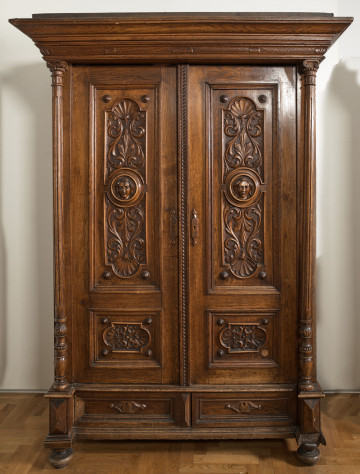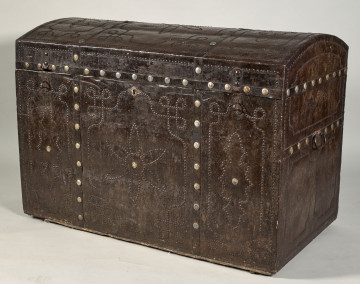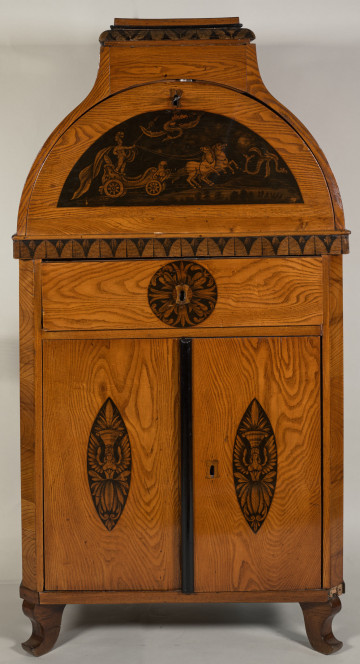
Wardrobe
1st half of the 20th century
Castle Museum in Łańcut
Part of the collection: Historia miasta i regionu
It evokes the memory of the most distinguished residents of Łańcut and their work for the city. This desk, the origins of which are unknown, certainly belonged to one of the wealthy townsfolk. In spite of being a small city, Łańcut had an exceptionally large intelligentsia and a large group of state employees, who made up 30% of the population. The latter included those working at the post office, on the railways, in the judiciary, in the starost’s office and in the City Hall. There was also a large group of so-called officialists – private clerks employed by A. Potocki. The intelligentsia also included teachers, doctors, lawyers and – starting from 1921 – also the officers of the 10th Mounted Rifle Regiment stationed here. Compared to other cities of its size, the Łańcut community was very diverse, with particularly high numbers of the intelligentsia. Over the years, through professional work and social involvement in current affairs of the city, the intelligentsia has contributed to its economic, cultural and educational growth. By working and taking part in the efforts of the City Council, it turned Łańcut into a centre with a well-developed educational system and a wealth of thriving institutions, businesses and social organisations. Economic and cultural revival was undoubtedly fostered by Galicia’s autonomy, which it gained in 1867. This brought about many significant changes, made possible by the determination and work of the local intelligentsia. This well-off social group usually lived in townhouses or villas located in gardens, which have survived to the present day. Their apartments usually featured living rooms, as well as a study furnished with all the necessary working equipment. Just like every living room featured a musical instrument, every study had a desk, along with objects required for everyday work – a pen, an inkstand, a blotter, or a paperweight. Joanna Kluz
Dimensions
height: 103 cm, width: 107 cm
Object type
History of the city and the region
Technique
gluing, rolling, French polish coating
Material
metal, wood
Creation time / dating
Creation / finding place
Owner
Castle Museum in Łańcut
Identification number
Location / status

1st half of the 20th century
Castle Museum in Łańcut

19th (?) century
Castle Museum in Łańcut

18th-19th century
Castle Museum in Łańcut
DISCOVER this TOPIC
National Museum in Lublin
DISCOVER this PATH
Educational path